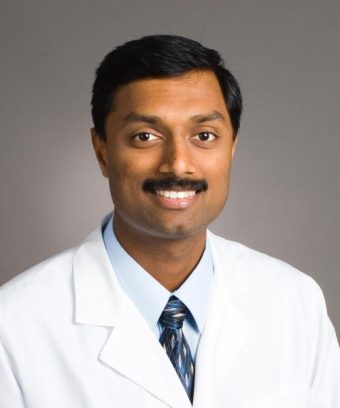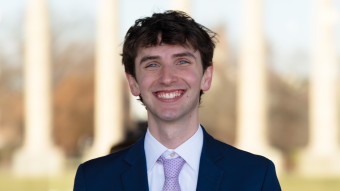
Feb. 22, 2022
Contact: Eric Stann, 573-882-3346, StannE@missouri.edu

Scientists have known for years that a person’s risk of cardiovascular disease (CVD) can be lowered with lifestyle changes such as modifying diet, exercise, alcohol and tobacco use. Now Anand Chockalingam and Sharan Srinivas at the University of Missouri demonstrate in a new study that a long-term association also exists between an adolescent’s psychological well-being and their risk of CVD as an adult.
Specifically, Chockalingam, a professor of clinical medicine, and Srinivas, an assistant professor of industrial and manufacturing systems engineering, have found that people who are more optimistic or positive when they are adolescents can lower their chances of being in the high-risk category for CVD as an adult.
“Here, we are recognizing the role of the environment and lifestyle in heart disease,” said, Chockalingam, who is also a cardiologist with MU Health Care. “Some prior research has shown that more than 80% of all heart attacks can be prevented with a few simple lifestyle interventions at any point in the individual's life. Although a heart attack may occur at the age of 55, the underlying buildup of plaque or atherosclerosis starts much earlier, often in teenage years. By exploring healthy habits and connecting with optimistic peers in the impressionable teenage years, it becomes intuitive to sustain a good lifestyle.”
Chockalingam believes this study emphasizes the value of optimism in an adolescent’s life.
“Adolescents are simultaneously understanding the world as well as their own inner nature and mindset,” Chockalingam said. “Therefore, parents and other caregivers have a substantial role in the lifetime resilience and outlook of children. The biggest legacy that anyone can pass on for subsequent generations is optimism.”
The team analyzed data from study participants involved with the National Longitudinal Study of Adolescent to Adult Health (Add Health). Chockalingam said the database served as a rich source of information for their study.
“The Add Health database meticulously collected data from over 20,000 adolescents when they were about 15 years of age, and followed up every few years afterwards with repeated surveys of several hundred health aspects for the same group of children,” Chockalingam said. “This gives us a unique window into the lifetime risk and correlation between various social, economic, psychological and genetic health determinants.”

A shared interest in tennis
Both researchers have personal experience that reflects the results of their study. Srinivas credits his involvement in sports as a youth in India, including playing competitive tennis until age 18, for leading to a life and career advocating for a healthy lifestyle, both mentally and physically.
His passion, along with a continued interest in playing tennis, also led to a serendipitous research collaboration with Chockalingam. What began as a friendly game of tennis between two working professionals — Srinivas and Chockalingam — grew over time to include discussions of their mutual interests in health care-related research. Eventually, the two began working together on research projects, and their expertise complements one another — Srinivas focuses on data analytics and industrial engineering tools to improve both the patient and health care provider experience; Chockalingam provides clinical insights and a health care provider perspective.
Integrating engineering and health care
Srinivas believes this study could help clinicians develop a personalized approach to lower someone’s CVD risk by integrating problem-solving techniques currently used by industrial engineers that place an emphasis on prevention and early detection.
“There are several step-by-step techniques established by industrial engineers that help with early detection of problems in the manufacturing and service industries,” said Srinivas, who has a joint appointment in the Trulaske College of Business. “This is an opportunity to adapt some of these techniques to enable health care practitioners to monitor the well-being of an adolescent over time, because that’s the formative stage where your outlook on life is established, and it doesn’t change much after that.”
Srinivas acknowledges this study is only a first step toward establishing the association between adolescent well-being and CVD risk. He believes additional analysis of other data sets are needed to help overcome a limitation they had in this study, which was only taking a snapshot of someone’s life during adolescence and again during young adulthood. He says there needs to be additional insights into how people are doing in between these life stages.
In the future, Srinivas would like to explore the use of other industrial engineering and data analytics techniques, such as machine learning.
“We want to use these techniques to help predict the long-term risk for CVD among adolescents, and uncover the impact that underlying factors can have on a person’s chance to develop CVD, including the influence of a person’s well-being,” Srinivas said.
“Adolescent psychological well-being and adulthood cardiovascular disease risk: longitudinal association and implications for care quality management,” was published in Benchmarking: An International Journal. Kavin Anand, an undergraduate student at Stanford University, also contributed to this work.
Editor’s Note: Chockalingam’s appointment is located in the MU School of Medicine’s Division of Cardiovascular Medicine, which is part of the school’s Department of Medicine.
The University of Missouri College of Engineering is celebrating its 150th anniversary in 2022. To learn more, please visit the College of Engineering.



